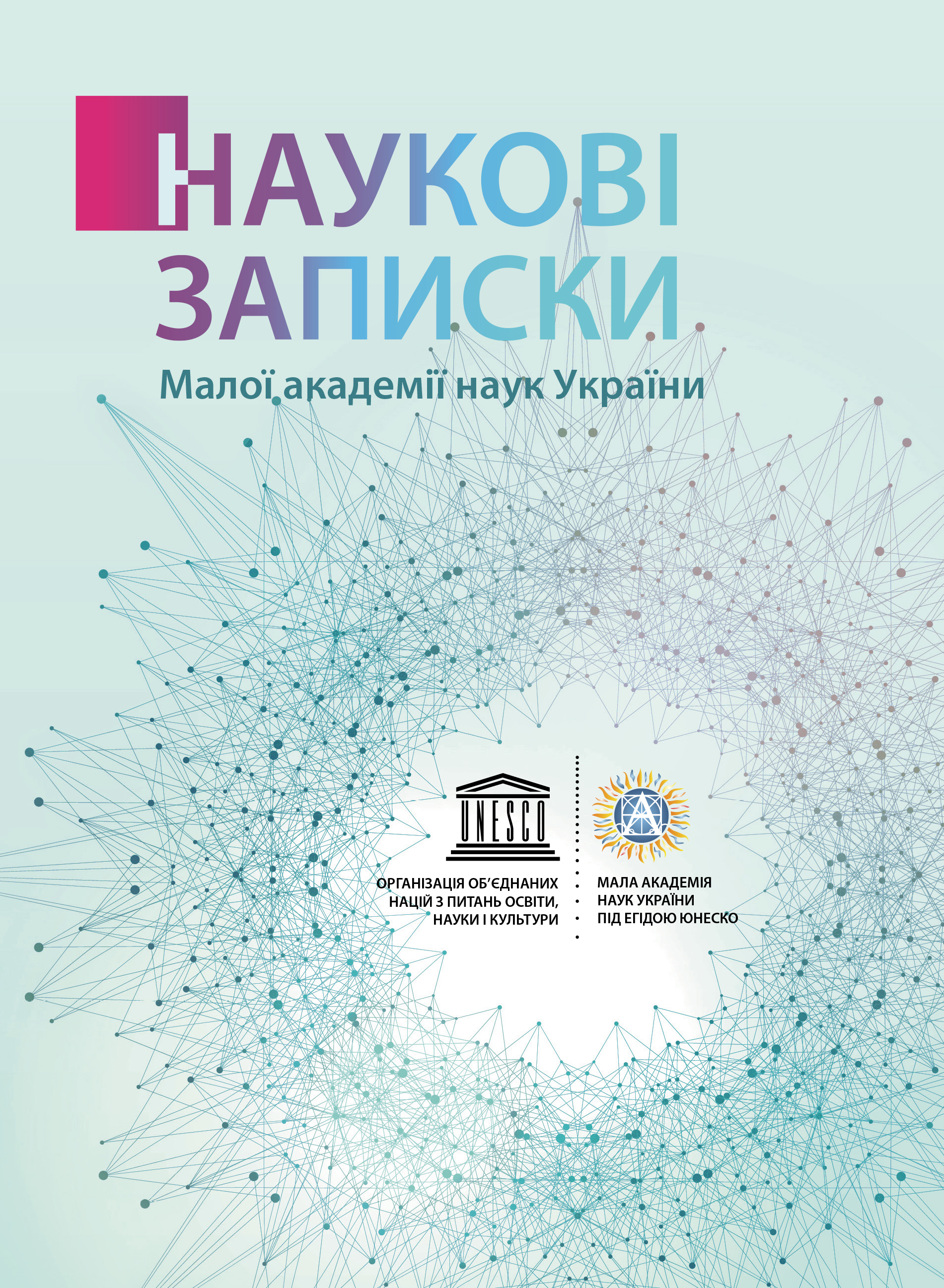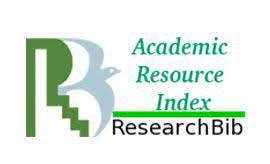Theoretical basis of integrative approaches studying of STEM-education programs implementation in secondary educational institutions of Ukraine
DOI:
https://doi.org/10.51707/2618-0529-2020-18-10Keywords:
secondary educational institutions of Ukraine, STEM education, transdisciplinary approachAbstract
The article examines integrative approaches of educational STEM programs implementation in secondary educational institutions. The concept of “STEM education” is not stable. The views of experts on its content are revealed through such generalized components as pedagogical technology (pedagogical process), focus on practical tasks and problem-based learning. At the same time, integrative approaches find application in the disciplines, the sequence of courses, and in a separate course. Generalization of the definitions of the concept “STEM education”, proposed by various experts, made it possible to understand it as a joint activity, interaction and cooperation of teachers, students and stakeholders, aimed at overcoming the fragmentation of knowledge by eliminating boundaries between them, integrating content components. It provides the formation of key competencies necessary for further employment and life activity in the conditions of the formation and development of new branches of knowledge. The article describes the general features of the learning organization in accordance with disciplinary, multidisciplinary, interdisciplinary and transdisciplinary approaches. In the context of transdisciplinarity, the prospects for the development of educational programs in secondary educational institutions of Ukraine is considered. It is possible to single out a number of problems accompanying the process of STEM courses developing and implementing. There are the problem of systematizing the structural and logical links between disciplines to be merged, the problem of professional readiness of teachers specializing in teaching one or two disciplines to take responsibility for mentoring and supporting student’s transdisciplinary projects and modernization of educational laboratories and making of modern STEM centres at secondary educational institution.
References
Zghurovsjkyj, M. Z. (Ed.). (2016). Forsajt ta pobudova strateghiji socialjnoekonomichnogho rozvytku Ukrajiny na serednjostrokovomu (do 2020 roku) i dovghostrokovomu (do 2030 roku) chasovykh ghoryzontakh [Foresight and development of the strategy of social and economic development of Ukraine in the middleterm (until 2020) and longterm (until 2030) time horizons]. NTUU “KPI imeni Ighorja Sikorsjkogho”, Politekhnika [in Ukrainian].
Dugger, W. E. (2010, March). Evolution of STEM in the U. S. 6th Biennial International Conference on Technology Education Research, 1–8. DOI:10.1.1.476.5804 [in English].
Peters-Burton, E. E., Lynch, S. J., Behrend, T. S., & Means, B. B. (2014). Inclusive STEM High School Design: 10 Critical Components. Theory Into Practice, 53 (1), 64–71. DOI: 10.1080/00405841.2014.862125 [in English].
Roco, M. C., & Bainbridge, W. S. (2003). Converging Technologies for Improving Human Performance: Nanotechnology, Biotechnology, Information Technology and Cognitive Science. Springer. DOI: 10.1007/978-94-017-0359-8 [in English].
Science, Technology, Engineering, and Math, including Computer Science | U. S. Department of Education. (n. d.). U. S. Department of Education. Retrieved August 4, 2020, from https://www.ed.gov/stem [in English].
PISA 2018 Results (Volume I). What Students Know and Can Do. Paris : PISA, OECD Publishing, 2019. 354 p. DOI: 10.1787/694c168b-id
Martynjuk O. O. STEM tekhnologhiji jak zasib formuvannja informacijnocyfrovoji kompetentnosti vchyteliv ta uchniv [STEM technologies as a form of formation of informational and digital competency of teachers and students]. Zb. nauk. pr. Kam’janecjPodiljsjkogho nacionaljnogho universytetu imeni Ivana Oghijenka 24, 18–22. DOI: 10.32626/2307-4507.2018-24.18-22.
Patrykejeva O., Vasylashko I., Lozova O., Ghorbenko S. Uprovadzhennja STEM osvity u zaghaljnoosvitnikh ta pozashkiljnykh navchaljnykh zakladakh: metodychnyj aspekt [STEM education implementation in general and outofschool educational institutions: a methodical aspect]. Ridna Shkola, 9–10, 90–95. http://nbuv.gov.ua/UJRN/rsh_2017_9-10_1818 [in Ukrainian].
Kucepal, S. (2018). STEM/STEAM/STREAM osvita — novyi trend v ukrainskomu osvitianskomu dyskursi [STEM/STEAM/STREAM education is a new trend in the Ukrainian educational discourse]. Education Landscapes, 1, 11–14. DOI: 10.29202/el/2018/1/2. [in Ukrainian].
STEM resources. (n. d.). California Mathematics Council. Retrieved August 4, 2020, from https://www.cmcmath.org/stem [in English].
Torlakson, T.(2014).Innovate: a blueprint for science, technology, engineering, and mathematics in California Public Education. California Department of Education. https://www.cde.ca.gov/pd/ca/sc/documents/innovate.pdf [in English].
Moore, T. J. (2014). Advancing the state of the art of STEM integration. Journal of STEM Education, 15 (1), 5–10. https://www.scribbr.com/apacitationgenerator/new/articlejournal [in English].
Vasquez, J. A., Comer, M., & Sneider, C. (2013). STEM Lesson Essentials, Grades 3–8: Integrating Science, Technology, Engineering, and Mathematics (1st ed.). Heinemann [in English].
American Academy of Arts & Sciences. (2013). ARISE 2 (Advancing Research in Science and Engineering): Unleashing America’s Research and Innovation Enterprise. https://www.amacad.org/sites/default/ files/academy/multimedia/pdfs/publications/researchpapersmonographs/arise2.pdf [in English].
UNESCO. (1998). Transdisciplinarity. Stimulating synergies, integrating knowledge. Division of Philosophy and Ethics UNESCO. https://unesdoc.unesco.org/ark:/48223/pf0000114694 [in English].
Lawrence, R. J. (2004). Housing and health: from interdisciplinary principles to transdisciplinary research and practice. Futures, 36 (4), 487–502. DOI: 10.1016/j.futures.2003.10.001 [in English].
Lawrence, R. J. (2010). Beyond disciplinary confinement to imaginative transdisciplinarity. In J. Harris, V. A. Brown, & J. Russell (Eds.), Tackling wicked problems through transdisciplinary imagination (pp. 16–30). Routledge. DOI: 10.4324/9781849776530 [in English].
Lawrence R. J. Housing and health: From interdis-ciplinary principles to transdisciplinary research and practice. Futures. 2004. No 36 (4). P. 487–502. DOI: 10.1016/j.futures.2003.10.001
Piaget, J. (1974). L’Epistémologie des Relations Interdisciplinaires. Internationales Jahrbuch Für Interdisziplinäre Forschung, 1, 154–171. http://www.fondationjeanpiaget.ch/fjp/site/textes/VE/jp72_epist_relat_interdis.pdf [in French].
Nicolescu, B. (2009). The Relationship between Complex Thinking and Transdisciplinarity. Symposium on Complex Systems Modeling and Complexity Thinking, Paris, France. https://cirettransdisciplinarity.org/ARTICLES/Nicolescu_fichiers/MSH15062009.pdf [in English].
Downloads
Published
How to Cite
Issue
Section
License
Copyright (c) 2021 SCIENTIFIC NOTES OF JUNIOR ACADEMY OF SCIENCES OF UKRAINE

This work is licensed under a Creative Commons Attribution 4.0 International License.













